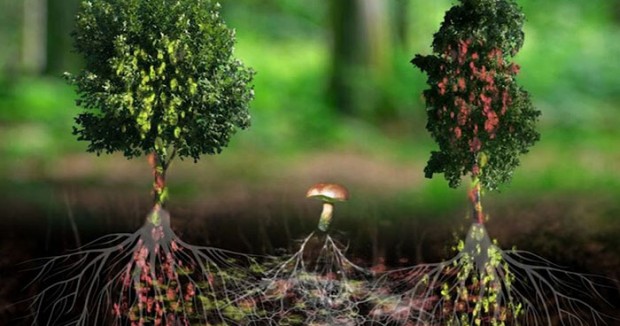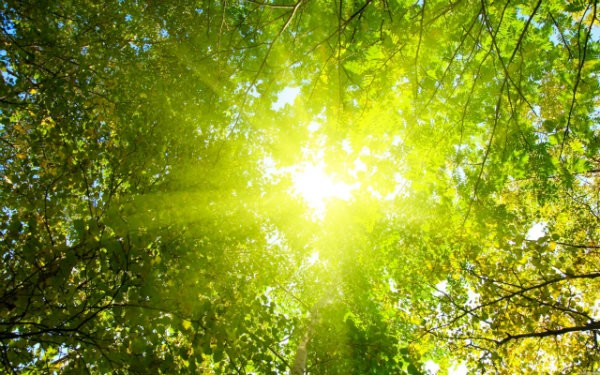According To An Ecologist, Trees Have A Language Of Their Own And Can Talk To Other Trees
Walking around a tree can create a person a healing, regenerating and calming effect which could be felt more and more amongst the areas where trees are gathered; the forests. Suzanne Simard, an ecologist, says that there are many things happening in the forests that we’re not aware of and that they have an interconnected and complicated social connection which is sourced from underground.
"A universe of endless, biological pathways that link trees and enable them to interact, and enable the forest to act as though it were a single organism."
After 30 years researching forests in Canada, Simard discovered that trees can talk with each other over certain distances. She even concluded that trees are very similar with humans as being extremely social and as their survival depends on other trees. Intercommunication in the forest is very critical thing. Mushrooms, via their roots that look like hair, hidden messages are transmitted amongst trees, also those who are in need of water and nutrition can meet their needs through them.
Suzanne would love to lie down and gaze throught ancient trees of British Columbia forests, where she grew up. One day, her dog had an accident and fell into the forest, they needed to get him out of there by digging which caused Suzanne realize the underground connections of trees that she would do studies about later on. During her studies, she discovered that carbon could be transmitted via root of one pine seedling to another root.

Support In Forest Life
Suzanne’s intuitioun acquired from that incident with her dog led her to study further on forests. Since she didn’t have enough evidence, many colleagues could contradict her. So, she was having difficulties in finding funding for her research. Therefore, she planted 240 birch, fir and cedar trees to held her own experiments in Canada. She though that firs could be interconnected underground but cedar wouldn’t. She surroundered the seeds with plastic sacks and filled them with different kinds of carbon gas; radioactive gas to the birch and a stable carbon dioxide gas to the fir.
Later on, when she took a walk around the trees, she explored that the fir and birch trees were communicating and transmitting carbon from one another, whereas there was silence over the cedar. Birch was sending carbon into the roots of fir, particularly in shade. In the winter, the birch was the one in need as it became leafless and the fir returned the favor with carbon. Till that date, science had proved that trees would maintain their lives in some kind of a competition, striving for more carbon, water, nutrition and sunlight than the other trees. Simard’s studies proved the opposite that trees act interdependently and in a cooperating manner, that they have a deeper commitment among each other.
Trees could communicate with each other through the mycelium, transmitting chemical and hormonal signals. These messages were critical in determining which tree was in need of what nutrients. They shared the elements they acquired from each other to create a balance in the forest.
“In such a large system as internet, one could track mycelium of hundreds of kilometres mycelium beneath one foot."

Mother Nature’s Wisdom
The network of mycelium is very similar to that of the internet. It provides communication between various individuals within a forest and different species. A single mother tree can reach many other trees at once and she is the one nurturing younger trees. This connection of trees also raises the resistance of the human beings.
Suzanne’s studies concluded with vital findings evoking us for the dangers that we put forests in. She discovered that if a mother tree gets injured or people hew it down, it might not transmit the wisdom it has to a younger tree. She expects that her study would change the practices in forestry. People tend to take out more trees than they plant which creates a global environmental problem in terms of forest capacities, and therefore self-healing capacities. But Suzanne has hope.
For a sustainable environment, Suzanne presents four basic solutions that could reduce damage in forestry:
Locals of an area should visit their forests more frequently.

Old trees in ancient forests must be saved as mother trees, genes and mycelium networks store themselves in them.
If we need to cut some trees, we have to be careful in saving the legacy that mother trees leave behind so that the wisdom can be transmitted to the next generations.
We need to rebuild our forests with a wide range of species.
As the studies increase on trees, people have better opportunity to be enlightened on how to save the life in forests. We should live in harmony with the mother nature to prevent disastrous outcomes for both the environment and humans.

